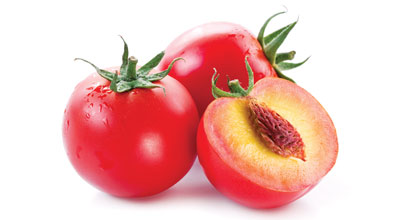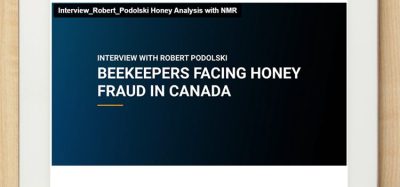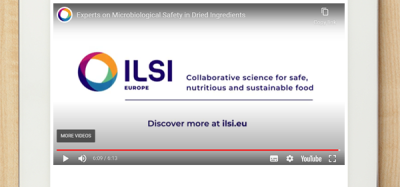Food fraud prevention – beyond adulterants and to decision-making
- Like
- Digg
- Del
- Tumblr
- VKontakte
- Buffer
- Love This
- Odnoklassniki
- Meneame
- Blogger
- Amazon
- Yahoo Mail
- Gmail
- AOL
- Newsvine
- HackerNews
- Evernote
- MySpace
- Mail.ru
- Viadeo
- Line
- Comments
- Yummly
- SMS
- Viber
- Telegram
- Subscribe
- Skype
- Facebook Messenger
- Kakao
- LiveJournal
- Yammer
- Edgar
- Fintel
- Mix
- Instapaper
- Copy Link
Posted: 27 October 2014 | John Spink, Assistant Professor and Director of the Food Fraud Initiative, Michigan State University / Douglas C. Moyer, Assistant Professor, Program in Public Health, Michigan State University | 2 comments
Food Fraud is a very hot topic at the moment and the development of a ‘Food Fraud Vulnerability Assessment’ is the next important step. There are several major projects underway that will shape our industry. Fortunately, project teams are collaborative and many of the same thought leaders are working together. A key point is that the assessments need to cover all food fraud, not just adulterants. The assessments also need to provide analysis that supports clearly defined decision-making for companies and countries…


To use some common food fraud concepts, the scope is the ‘what’ and the guidance for implementation is the ‘how’. The scope of the assessments should include:
- Who will use the assessment?
- How will they use it, and to make which decisions?
- What format is needed for the analysis to be directly applied?
Our work at the Michigan State University (MSU) Food Fraud Initiative (FFI) has evolved over time as we continue to follow the research questions posed by the practitioners1. We have found a continuing expansion of academic disciplines needed to holistically address food fraud prevention. Our research started in food safety and criminology, and we have since added supply chain management and business managerial accounting. We now see a natural expansion to public health, law and prosecution (all explained in further detail below). Since the ultimate goal is consumer confidence, we also needed to include consumer behaviour.
Food fraud prevention academic disciplines
Food safety
Our core and academic home lies in food safety and the College of Veterinary Medicine. MSU has offered a Master of Science degree in Food Safety since 2002. This is an online programme, and has incorporated students form all around the world. I developed and teach three graduate courses including Packaging for Food Safety, Anti-Counterfeit and Product Protection (the foundation for food fraud prevention), and Quantifying Food Risk. I have been teaching the packaging course for almost 10 years and in addition, teach food fraud and packaging-related modules in Global Food Safety, Food Safety Management, Food Protection and Defence and Food Toxicology. Combining four of those courses provides the foundation for MSU’s Graduate Certificate in Food Fraud Prevention. MSU also offers a Food Fraud Overview free, open online course13,14.
Criminology
The theoretical foundation of food fraud prevention is – logically – based on criminology. When we first started our research in 2006 we did not find the root cause until our colleague Dr. Robyn Mace (School of Criminal Justice, MSU) introduced ‘Situational Crime Prevention’ and the ‘Crime Triangle’. If the ‘biological organism’ was a microbe we’d engage the discipline of ‘Microbiology’. Since the ‘biological organism’ is a human it’s logical to engage the social sciences and criminology.
Criminology provides a wealth of resources we can draw upon to understand motivation in committing food fraud, and to focus on prevention. The Situational Crime Prevention theories have been broadly researched and widely implemented since the early 1970s. From as early as the mid-1700s, criminology has had a focus on ‘prevention’ (to keep from happening) not ‘mitigation’ (to make less harsh)2-5. For example, criminology scholar, Bentham, once stated “the ultimate goal is the prevention of all crime”3. Another source stated that “if the peace has been kept, crime has in effect been prevented” and that the focus is to “eliminate potentially dangerous or criminal situations”5. And to quote another early crime scholar, Beccaria: “Laws and punishment [and now countermeasures] should be as restrictive as necessary to deter those who would break them by making it not in their best interests to do so.4” Some – admittedly not all – crimes can be prevented.
Supply chain management
Another important discipline is supply chain management. Surprisingly, there are food organisations that are unaware there is a supply chain science. There are actually over 190 U.S.-based universities that have supply chain management programmes and some offer Bachelor’s degrees, Master’s degrees and PhDs. The incredible monitoring and transparency of the supply chain is a critical piece of the food fraud prevention puzzle.
Business managerial accounting
It makes sense that the discipline of business would be involved in business processes. What is novel is the definition of how the decision sciences apply to food safety, food fraud, and food defence management. An emerging concept is Enterprise Risk Management (ERM), which is now a regulatory requirement for the financial and insurance industry. The general ERM concepts are being implemented across all industries including the food industry. We find that we are spending more of our time researching how companies achieve ‘risk mindfulness’ and then studying how companies assess and manage those risks. We have been conducting research on managerial accounting practices and ERM. To participate in our most recent survey please see15.
Public health
While taking all these disciplines into consideration we find the government and agency decision-making is often based on public health issues. The discipline of ‘Public Health’ has a unique focus on population-wide concepts and issues. Government food agencies are focused on the formal ‘Public Health’ issues (that is, the discipline of ‘Public Health’ not just ‘the health of the public’). This is an area that will increase in focus as the governments continue to propose, implement, and manage their food fraud laws and regulations. MSU just completed a research project on the awareness and public-private countermeasures related to seafood fraud. In another recently completed study we reviewed consumer awareness of the prevalence of counterfeit product in the marketplace.
Laws, enforcement and prosecution
A topic that is critical to the entire food fraud prevention process is how the laws and regulations will be enforced and prosecuted. We are in an era of shrinking government budgets and that includes food agencies. The more general law enforcement authorities are already stretched and courts are also overwhelmed. In addition, there has been a focus on reducing costs in the prison system, so more criminals are diverted to parole or non-incarceration options. MSU has just concluded a three-year study on the consumer expectations for law enforcement of product counterfeiting that related directly to food fraud6.
Consumer behaviour
Finally, consumers are becoming more of an important participant in the food supply chain, not only as consumers of products but as producers of information. Social media has become a major influence on the food industry and the role of the consumer is as important as ever. A presentation at the GFSI China Focus Day noted that the number one factor in a Chinese consumer selecting a food retailer was ‘No Fake Food’! We have an MSU Health Risk Communication Center that not only studies how consumers can be made aware of health risks but also how they participate in sharing information about health concerns. It’s estimated that a company has 20 minutes before a foodborne illness concern goes viral. Some of the recent food fraud issues to become global headlines included expired date codes (date code tampering) and fox meat in donkey meat (in a small region in rural, northern China).
Scope of food fraud: ‘The What’
To start reviewing food fraud prevention we should step back and review the base concepts. The overall concept is ‘food protection’, which includes food safety, food fraud, and food defence. ‘Food quality’ is often included in that continuum as well. Food safety (an unintentional act with a human health threat) and food defence (an intentional act with intent for a human health threat or either economic harm or terror) are pretty well defined. The food safety and food defence programmes are very defined and thorough. To be clear, in a food fraud incident such as the horsemeat adulteration of 2013, the food safety and food defence systems did not fail at their defined tasks; but the food protection system did fail. Food fraud happens to fall outside the scope of food safety and food defence (see Figure 1).
The types of food fraud include7:
- Adulteration (including substitution, concealment, dilution)
- Theft (including shoplifting and cargo theft)
- Tampering (including date code tampering and unauthorised refilling; also could be considered product-related mislabelling)
- Unauthorised production over-runs (including excess or post-contract production)
- Diversion (including smuggling, parallel trade, and illegal grey market)
- Simulation (illegal knock-offs)
- Counterfeiting (intellectual property rights violations of trademark, trade dress, patent, or copyright).
This food fraud scope is consistent with UK Food Standards Agency, European Commission and Global Food Safety Initiative (GFSI) definitions, which all explicitly note concepts such as ‘stolen goods’. Stolen goods are genuine, ‘authentic’ product so there would be no ‘adulterant’ to define it as non-confirming. This is the challenge when applying traditional food safety or even food defence countermeasures – there is no adulterant. Of course an authenticity test could not identify the fraudulent product. To review the scopes:
- The European Commission’s Food Fraud referendum states: “Considers that official controls should focus not only on food safety issues, but also on preventing fraud and the risk of consumers being misled8”
- The UK Food Standards Agency states: “Food fraud is committed when food is deliberately placed on the market, for financial gain, with the intention of deceiving the consumer… Food fraud may also involve the sale of meat from animals that have been stolen and/or illegally slaughtered, as well as wild game animals like deer that may have been poached9”
- GFSI states: “Food Fraud, including the subcategory of economically motivated adulteration, is of growing concern. It is deception of consumers using food products, ingredients and packaging for economic gain and includes substitution, unapproved enhancements, misbranding, counterfeiting, stolen goods or others10.”
Food fraud is more than adulteration
The broad ‘food fraud’ term is often used when the project focus is only on adulteration. This creates confusion. The MSU’s previous work with the International Standards Organization’s Technical Committee 247 on Fraud Countermeasures and Controls provided insight on the importance of being very precise in the use of terms or phrases. This is especially important at the start of an initiative or activity. During research we found four working definitions of ‘food quality’. Each of the four users would think they were precisely defining the term and all four would be mistaken. A food manufacturer defined quality as ‘consistent processing and attributes’; a food standards manager cited ‘adherence to a specification’; a public health professional cited ‘no danger to human health’; and a consumer stated ‘premium product’. All are right and all are wrong. The key is clearly defining the term and the scope of the project.
Economically motivated adulteration (EMA)
To review, the definition of EMA is usually based on the U.S. Food and Drug Administration (FDA) definition [my emphasis added]: “For purposes of this public meeting [on EMA], FDA proposes a working definition of EMA as the fraudulent, intentional substitution or addition of a substance in a product for the purpose of increasing the apparent value of the product or reducing the cost of its production, i.e. for economic gain.” The term EMA has been used widely but it is not defined in a U.S. law or regulation. It has only been defined in an official notice for that EMA meeting. EMA is also not mentioned in the U.S. Food Safety Modernization Act (FSMA). EMA is mentioned in the FMSA’s draft rulemaking, where the reference is for a request for comments.
Focus on prevention: ‘The What’
With the scope of food fraud covering a wide range of acts beyond just the presence or absence of a substance, the most efficient countermeasure is prevention. The challenge of prevention is that it requires a holistic, all-encompassing supply chain wide approach. All of the supply chain partners must work together to achieve this goal.
In an article entitled ‘Food fraud and NIRS’, Rob Frankhuizen and Saskia van Ruth stated: “Rather than looking at specific incidents, a system analysis approach would be the preferred approach to prevent fraud in the future. For instance, by studying why putting melamine in products was perceived as a good fraud opportunity and how it could have been prevented16.”
While system-wide prevention seems like an incredibly complex and difficult proposition, the concept is rooted in tried-and-true concepts such as quality management. Examples include the widely adopted business programme of Six Sigma and the foundation of food safety in HACCP. Beyond the industry initiatives, prevention has become a key focus for public health and criminology. The focus on food fraud prevention is critical since we will not test our way to safety, we will not arrest our way to safety.
The goal is crime prevention, not just crime reduction or the reduction of the impact of an adverse event. The fraud opportunity is complex because the systems are complex. Over time, the ‘bad guys’ have found opportunities and adapted their work processes to slip through the gaps. They are trying to make money and will continually switch to the lowest risk and highest reward ‘fraud opportunity’, whether that is adulteration, counterfeiting, stolen goods, or some other hybrid activity. As the countermeasures and market conditions change, the type of fraud will evolve. These creative criminals are the reason we see so many different variations of food fraud. Fortunately, there is a science that studies both the ingenuity of the criminals as well as the ‘place’ of crime. Criminology provides a great method in situational crime prevention.
The foundation of Situational Crime Prevention is assessing and modifying the ‘place’ of crime. Using the concepts from the Crime Triangle – applied to product fraud – this includes the victim, fraudster, and guardian and hurdle gaps (see Figure 2). While detection is the most complex and important specific function its success can only be judged by the impact on prevention. We detect a specific fraud act or adulterant, deter a specific type of criminal or act, and we prevent the crime from being conducted in the first place.
Enterprise risk management: ‘The How’
Whether a company, or country, there are limited resources. Whether explicit or implicit, the governing bodies – be it a company’s board of directors or a country’s parliament – make resource allocation decisions. As Six Sigma grew out of quality management innovations, ERM has grown out of business decision science innovations. Many of those concepts are rooted in the Committee of Sponsoring Organizations of the Treadway Commission (COSO) managerial accounting principles and used by government agencies. COSO is an organisation formed by the leading financial and managerial accounting associations that are ‘dedicated to providing thought leadership through the development of frameworks and guidance on enterprise risk management, internal control and fraud deterrence11’. A foundation of COSO-based ERM principles are first achieving risk mindfulness and then implementing programmes “so that risk levels are managed within defined tolerance thresholds without being over-controlled or forgoing desirable opportunities12”.
A key value of ERM is that the business decision-making criteria for resource allocation are clearly defined. What’s the response to an assessment? Does an agency start a working group or create a centre? Does a company conduct a few horsemeat tests or hire a team? With food fraud rising on the agency, industry, and consumer radars, these are decisions that will need assessments and data. Covering all types of food fraud and providing ERM type analysis will be the needs of future Food Fraud Vulnerability Assessments. Even a public health agency such as the FDA is focused on human health outcomes but must compete for resources.
Summary
This article diverted from the usual discussions on food fraud incidents and test methods to find adulterants. The discussion around food fraud has shifted from the ‘what’ is the scope to the ‘how’ to implement. The food fraud prevention actions are moving ahead more quickly and confidently, based on a firm theoretical foundation. We are proud and honoured to be working with so many groups and so many outstanding colleagues.
References
- FFI, F.F.I. Home Page. 2014 [cited 2014 September 1]; Available from: www.FoodFraud.msu.edu.
- Merriam-Webster, The Merriam-Webster Dictionary — New Edition. 2004.
- Beirne, P. and J.W. Messerschmidt, Criminology (4th edn). Los Angeles, CA: Roxbury, 2005.
- Lanier, M. and S. Henry, Essential criminology. Second ed. 2004, Philadelphia: Westview.
- Hess, K., Introduction to Law Enforcement and Criminal Justice. 9th ed. 2009, New York: Wadsworth/ Cenegage Learning.
- Spink, J., Annual Survey Study of Product Counterfeiting by Michigan Residents Utilizing the MSU State of the State Survey: Implications for Food Fraud, in Food Fraud Initiative. 2014, Michigan State University.
- Spink, J. and D.C. Moyer, Defining the Public Health Threat of Food Fraud. Journal of Food Science, 2011. 76(9): p. R157-162.
- European Parliament, E.E., Report on the food crisis, fraud in the food chain and the control thereof, (2013/2091(INI), R.E.d. Lang, Editor. 2013, Committee on the Environment, Public Health and Food Safety, European Parliament.
- Food Standards Agency, U.F. Food Fraud, Home Page. 2014 [cited 2014 September 5]; Available from: http://www.food.gov.uk/enforcement/enforcework/foodfraud/#.U9v623rD-M8.
- GFSI, G.F.S.I., Food Fraud: An Industry Perspective. 2014.
- Committee of Sponsoring Organizations of the Treadway Commission, C. Home Page. 2014 [cited 2014 September 5]; Available from: http://coso.org/.
- Committee of Sponsoring Organizations of the Treadway Commission, C., Risk Assessment in Practice. 2012, Committee of Sponsoring Organizations of the Treadway Commission, COSO.
- www.online.foodsafety.msu.edu
- www.FoodFraud.msu.edu
- https://broad.qualtrics.com/SE/?SID=SV_3TPkQ8UYXVBDZ1H
- New Food, Volume 17, Issue 1 (March 2014)
About the authors
John Spink PhD is an Assistant Professor at Michigan State University. In 2013 he led the creation, and became Director of, the Food Fraud Initiative – an interdisciplinary group focused on a holistic approach to food fraud prevention. John is appointed in the College of Veterinary Medicine (Food Safety) and is closely connected to the College of Agriculture and Natural Resources (Food Science and Human Nutrition). He is also an Adjunct Professor in the College of Human Medicine Science at the School of Criminal Justice. Among other roles, John has held leadership positions at the International Standards Organization and the Global Food Safety Initiative, and has been a frequent U.S, agency presenter for the FDA, FBI, European Commission and FERA, among others. For further information visit www.foodfraud.msu.edu or email [email protected].
Douglas C. Moyer PhD is an Assistant Professor with the Program in Public Health at the Michigan State University College of Human Medicine. He develops and teaches online graduate-level classes including the ‘Introduction to Pharmaceutical Counterfeiting and the Public Health Threat’. Douglas is also a researcher for the Food Fraud Initiative. His grand research includes developing training exercises for food safety professionals. Before his return to academia, Douglas worked for the Ford Motor Company for 25 years, the last 10 as Food Customer Service Division’s Global Packaging Engineering Manager. He is also the Founder and Owner of Pack Edge LLC, a packaging management consulting firm.
Food businesses need to adopt a wholly new model for tackling fraud, says NSF International
Speaking to New Food, NSF’s David Edwards explained that prevention of food fraud requires a holistic approach that embraces company culture and instils heightened levels of awareness across all company functions. NSF’s seven-step approach sets out an integrated process from horizon scanning and product risk rating through to employee training and developing trusted supply chain relationships.
“At NSF we believe that interdisciplinary training which enables a harmonised approach to tackling the fraud challenge across different company functions is very important,” said Mr Edwards. “Too often there is a gulf between the food safety remit of the technical team and the pricing value policies of procurement. We have developed fraud awareness training programmes in partnership with a major UK university that bring together the technical and buying teams so they develop a mutual understanding of the issues and can build their priorities jointly. The programmes are being piloted currently with a leading food group, ready for launch in January 2015, and will help participants prepare for compliance with the new Issue 7 of the BRC Global Standard for Food Safety, which is almost certainly going to provide a much greater focus on product traceability and authenticity.”








MSU comments are accurate. TRU-ID have commercialized as a result of the recognized the need to help industry in all sectors identify adulteration. Dr. Steve Newmaster and Dr. Robert Hanner, experts in the proteins and nutraceuticals space for many years, have been assisting industry partners across the supply chain globally. Many who we engage with that know they have no issues with adulteration, see DNA testing and a continuing QA program that supports it, as a point of differentiation when marketing their Brands.
I am a registered subscriber to the MSU Food Fraud Initiative news letter and have been tracking developments in this important area for some time now .